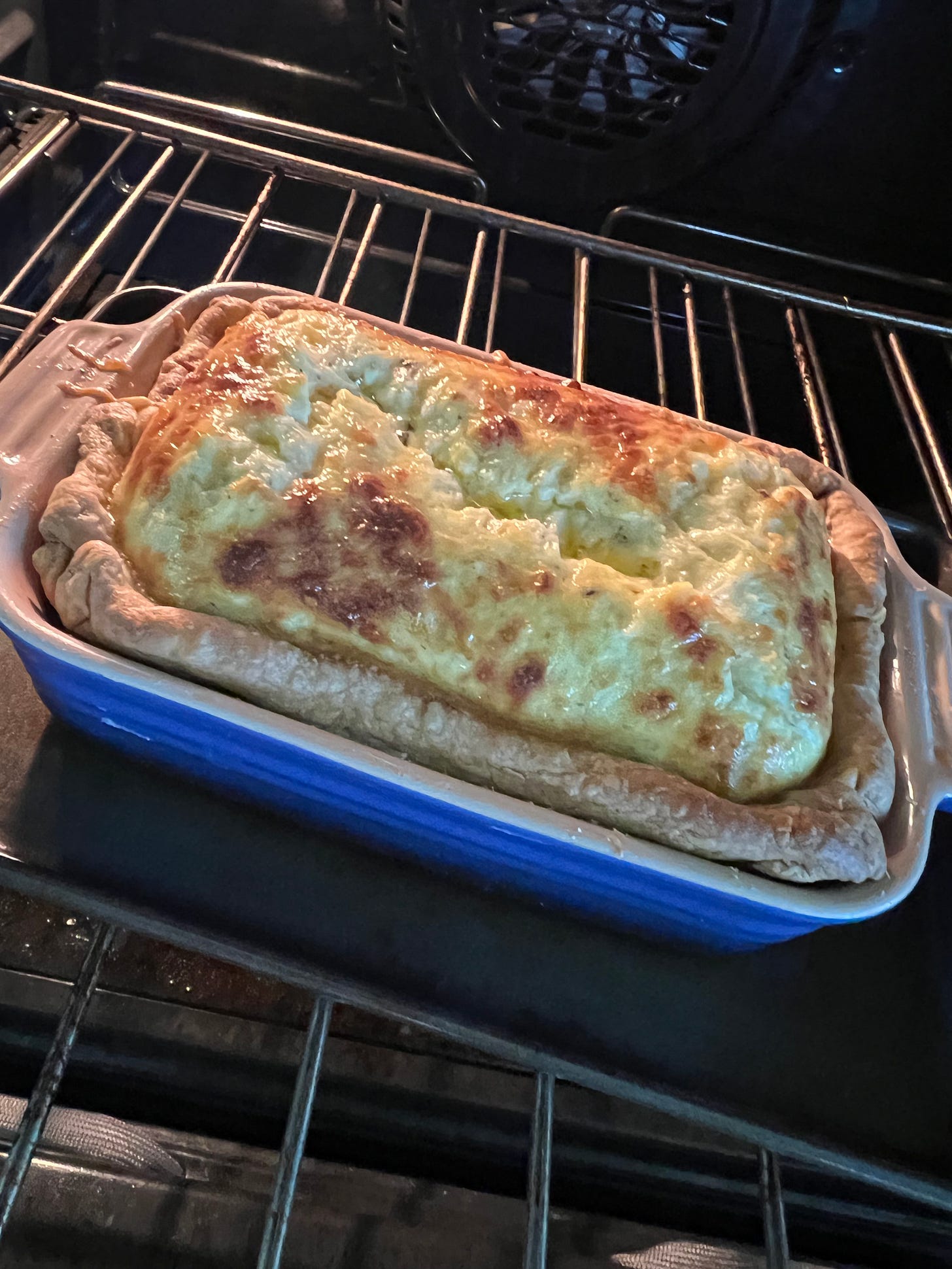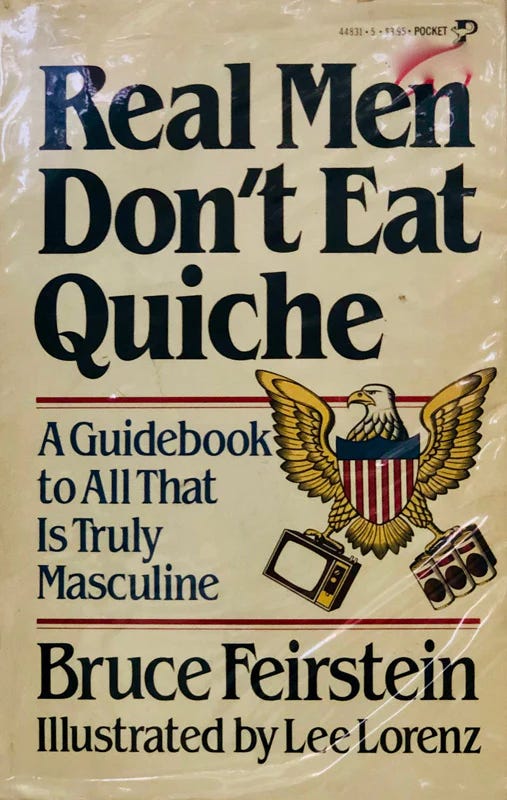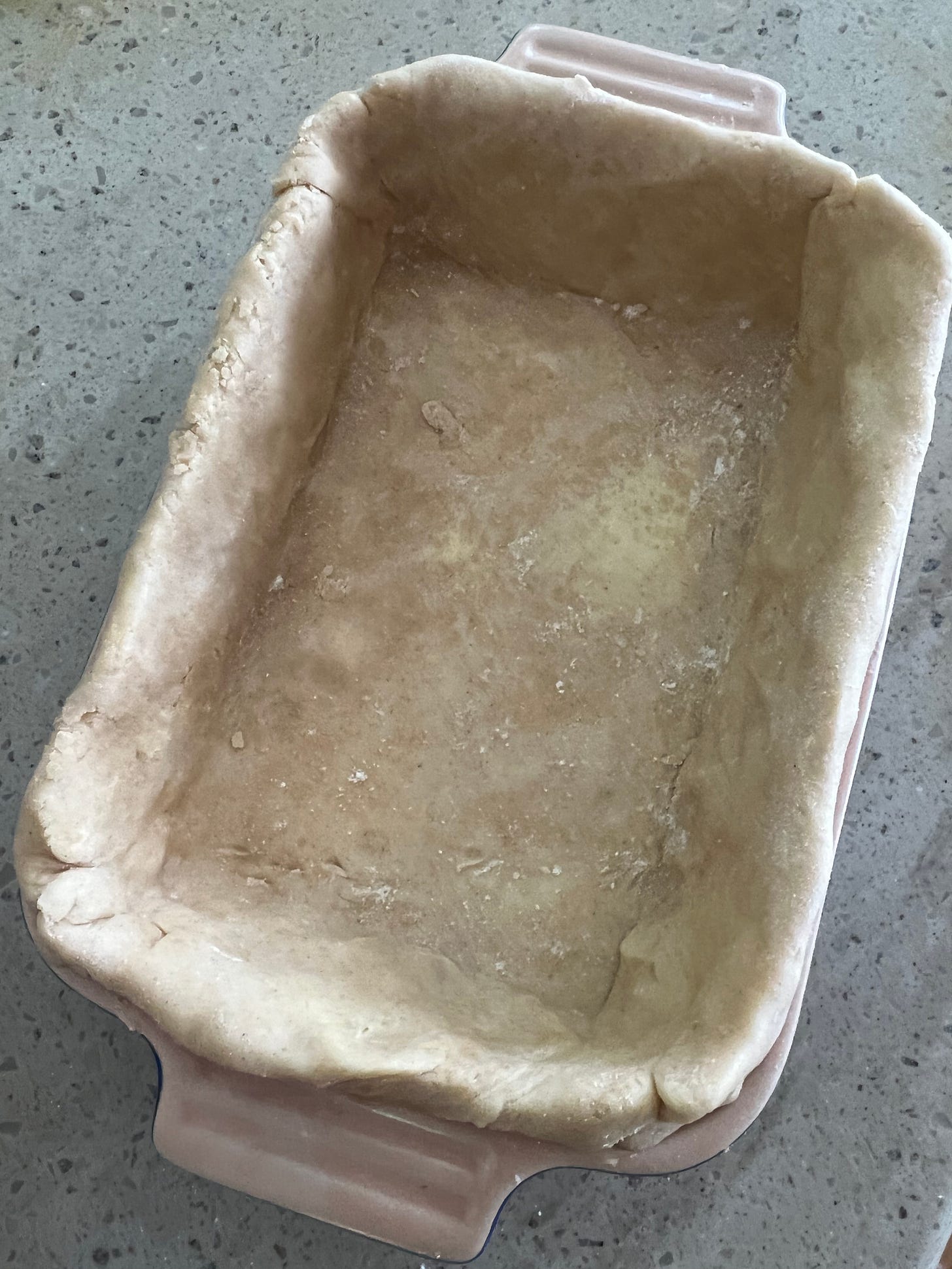I’m devoting Issue #56 to LGBTQ+ Pride Month, though, like my mother, who believed every day was Mother’s Day, I believe every day, every month, every year we have a responsibility to be aware of, sensitive to, and mindful of all of the diverse, marginalized individuals and communities that live among us and to always treat everyone with honor and respect.
For your listening pleasure, consider the current episode of my What’s Burning podcast, for which I interview nutrition and food journalist, author, oyster farmer, and provocateuse Tamar Haspel. It’s a great conversation you can listen to here. Thank you for your continued support. —Mitchell
Since the beginning of June I’ve wanted to write a newsletter that ties somehow to LGBTQ+ Pride Month. But I wasn’t quite sure what recipe, beyond the obvious and cliché rainbow cookies, would fit in a genuine way.

Truth is, lately I haven’t been a huge participant in Pride festivities. Which isn’t to say that I’m not proud to be gay. I’ve been out since I was 19 years old. Over the years, I’ve been an advocate for LGBTQ+ rights and a contributor to causes. In my senior year of college, I stepped up to assume the seat on student government reserved for the lesbian and gay community (the rest of the letters weren’t acknowledged yet) because if it went unfilled it would be lost. This is how I learned that I’m not a natural politician, if only because the “right thing to do” always seemed so obvious to me that I didn’t realize you had to bring others who couldn’t see it so clearly around. Valuable lesson learned.
There was a time, in my 20s and early 30s, when I enjoyed watching the Pride Parade shimmy down Fifth Avenue. One year I danced with 2,000 men on the Intrepid, a former battleship, now a museum permanently docked at Pier 86, as an affirmation of a change in the Army’s policy toward homosexuals. More recently, I’ve danced on Pride Parade floats, during my husband’s tenure as president of Congregation Beit Simcha Torah (CBST), the first and the largest LGBTQ+ synagogue in the world, which is also a hub of social justice activism. And, of course, Nate and I cheered when gay marriage was legalized nationally. We had already been engaged for a few months before that moment because it was legal to marry in New York State. But to have same-sex marriage recognized nationally was unfathomable and we rejoiced.
As life quieted down, issues were settled, rights secured, it seemed like my attention moved to more mundane matters, knitting, dog-walking, and, of course, cooking among them.
But here we are facing the very real possibility that many of the rights we fought hard for and have enjoyed will be rescinded. The LGBTQ+ community has been made a target by the same white supremacist groups (aka Republicans), who are retracting, rather than expanding, rights for all citizens. Many believe a women’s right to choose what’s best for her and her body is only the first target of the strategically anti-abortion, anti-human rights Supreme Court majority. And just the other morning a pundit on NPR was making the case for how the GOP is stirring the homo- and transphobia pot as part of a larger, deliberate plan to demonize marginalized communities in an attempt to retain power in key districts. How can we be here? Rights not only have to be fought for, they must be defended. March on.

So, what to cook?
For this crazy time, I give you quiche. Just a little less cliché than rainbow cookies, perhaps. But if you were a sentient being in the 1980s, you likely know the phrase, if not the book, Real Men Don’t Eat Quiche, a satire of masculinity by Bruce Feirstein that spent more than 50 weeks on the New York Times Bestseller list. The notion that men prefer masculine foods may have been tongue-in-cheek, but it came out in 1982, just one year after the first AIDS cases appeared among gay men, two years after Ronald Reagan began the conservative, anti-government drumbeat that laid the groundwork for the anti-democratic moment we are living in today. The book may have been funny at the time. Parts might still make me laugh. No one appreciates humor as a way to handle the inconsistencies and transgressions of the human condition more than I do. But I admit to finding it harder and harder to laugh at things these days.
Quiche is a savory egg custard baked in a crust. It seems gender neutral to me except perhaps that because the word is French it may sound fey to some, faggy to others. (In 2010, researchers at Northwestern University proved that men conform to gender norms when ordering food off of menus, but women don’t.). Quiche is really just a winning combination of eggs and other fillings in a buttery crust. I think of it as more of a technique than a recipe because just about anything can end up in a filling for a quiche. When I was a brunch cook in the late 1980s I made a different “quiche of the day” every week. There are classics, of course, like Quiche Lorraine, still a favorite. What’s not to love about bacon and onions and plenty of cheese baked into a creamy custard held in a buttery crust? Fuck off, macho man.
A Few Thoughts on Making Quiche
Although you can certainly bake a quiche in a pie plate, I like my quiches to have straight sides rather than sloped. I’m not sure why. It may just remind me of the quiches I’ve enjoyed from traiteurs in Paris. (Maybe it’s more manly?) Many a quiche dish has a scalloped edge, which is fine, but I like to bake them in regular baking pans or springform pans if I want to unmold before serving. If baking in a straight-sided pan, it’s really key to relax and chill the dough in the pan for some time before baking it, or the crust is likely to shrink and flop.
Some other advice. Key to success is making sure the crust is blind baked thoroughly before filling and baking again. The British baking icon Mary Berry has made much of a “soggy bottom” on the television competitions she judges. For a quiche, such an aberration must be avoided at all costs. Blind bake your crust in a hot oven first, lined with parchment or foil and filled with dry beans or rice or ceramic pellets meant to simulate same for about 15 to 20 minutes, until set, then remove the paper and filling and continue baking until lightly browned and cooked through. Cool before filling.
What flavor of quiche you make is up to you. Like a frittata, this savory pie is a great way to use up leftover bits of vegetables and meats, ends of cheese, what have you. My advice is to cook all the vegetable and/or meats before arranging them in the bottom of the pre-baked crust, so that they will not give off any excess liquid when the quiche bakes and you will be sure they are done. Cheese is not required, but I think is a key element in all of my favorite quiches, adding both texture and flavor. Grate the cheese or chunk it if it’s too soft and distribute it evenly on top of whatever else you have used.
The standard ratio for the custard is 2 eggs per cup of liquid, usually dairy, which can be as rich as heavy cream or crème fraîche or as light as skim milk. I usually use a combination of things so the richnes falls somewhere in between. Some yogurt or buttermilk contribute a nice flavor. I season the mixture generously with salt and freshly ground black pepper. To make it really taste French, some freshly grated nutmeg is key. Whip it all together and then slowly pour it into the pre-baked crust into which you have already arranged the other components. This way you can add just as much as your crust will hold and still have all of the filling evenly distributed. Bake until risen, browned, and set, et voilà, a delicious breakfast, brunch, lunch or dinner, fit for anyone of any gender identification.
TECHNIQUE: A PRIDEFUL QUICHE
Makes an 8-inch quiche, serving 4 to 6
½ recipe pie crust (see Issue #11)
3 or 4 strips (2 or 3 ounces) bacon, cut into ½-inch wide strips or lardons, sliced ham, smoked salmon, or other protein, if desired
Butter or olive oil, if not using bacon
1 small onion or large shallot, or an equivalent amount of leek, scallion, green garlic, or other alliums, or a combination, thinly sliced
Salt
Freshly ground pepper
Chopped fresh herbs, such as thyme, marjoram, tarragon, parsley, basil, or a combination
1 cup (2 ounces) grated Gruyère, Emmenthal, Comté or other firm cheese
¼ cup, (1/2 ounce) grated Parmigiano Reggiano, Pecorino Romano, or other hard grating cheese
3 eggs
1 ½ cups heavy cream, milk, buttermilk, yogurt, crème fraîche, or a combination
Freshly ground nutmeg
Begin by rolling out the pie crust on a lightly floured work surface to about 1/8-inch thick. The ultimate size and shape will depend on the baking dish you’ve chosen. The final dimensions should be at least ½-inch wider on all sides than the combination of the dish and its depth on each side. Transfer the crust to the dish and press into the pan. You may need to trim excess dough from the corners if your dish is square or rectangular. Trim the overhang so that there is no more than ½-inch all around and then fold that overhang under between the pan and the crust. Press the crust gently to fit snugly. Set the pan in the refrigerator for at least 30 minutes and preferably more. Meanwhile, preheat the oven to 425°F.
Remove the crust from the fridge. Line it with parchment or aluminum foil and fill with dry beans, rice, or pie weights. Bake for about 20 minutes, until you can smell baked flour and butter and the crust seems set. Remove the pan from the oven. Lower the temperature to 375°F. Remove the pie weights and the lining. If a side has collapsed anywhere, use the back of a spoon to gently push it back into place. Return the crust to the oven to finish baking. It should be cooked through and browned ever so slightly. If the crust bubbles up, press it down gently with the back of a spoon. Remove from the oven and allow to cool slightly. Keep the oven on.

While the crust is baking, prepare the filling. If using bacon, render it in a frying pan over medium high heat. If not using bacon, heat some butter or olive oil. Add the sliced onion and/or other alliums, a pinch of salt, and some freshly ground black pepper, and sauté in the fat until translucent. If using ham or other cooked protein, toss it in once the onions are soft. Add the chopped herbs and distribute. Transfer this mixture to the bottom of the baked pie shell and spread it out evenly. Scatter the grated cheeses on top. Place the pie shell on a baking dish to make it easier to transfer to the oven and to catch any drips while baking.
In a medium bowl, beat together the eggs with whichever dairy products you are using until well combined. Add a generous pinch of salt, some freshly ground black pepper, and some freshly ground nutmeg. Beat again. Slowly pour this mixture into the baked shell, over the filling, being careful not to disturb what’s there. Pour it in a few different places to make sure it settles evenly into the crust. The filling can come up almost to the top edge of the crust, but don’t let it spill over. Carefully transfer the filled shell to the oven. (Alternately, if you are worried about spillage, you can set the tray with the prebaked crust in the oven, transfer the egg mixture to a pitcher, and fill it in place without transferring.)

Bake the quiche for about 40 minutes or so, depending on the depth of your baking dish, until the filling has risen, set, and nicely browned. It might still look a little wet, but it shouldn’t wobble. Don’t worry if it has cracked. The filling will settle back down as it cools and the cracks will be less prominent. Remove from the oven and let cool at least 30 minutes before serving.







